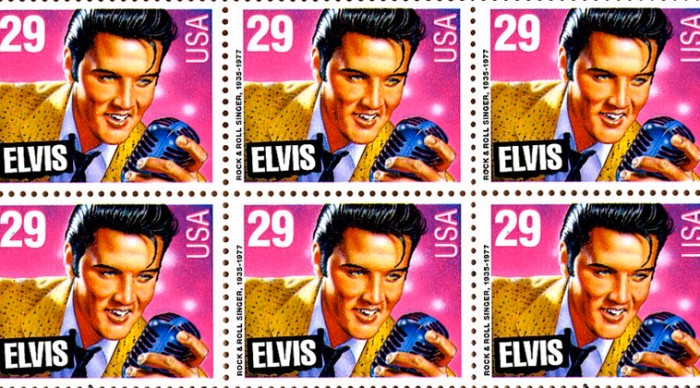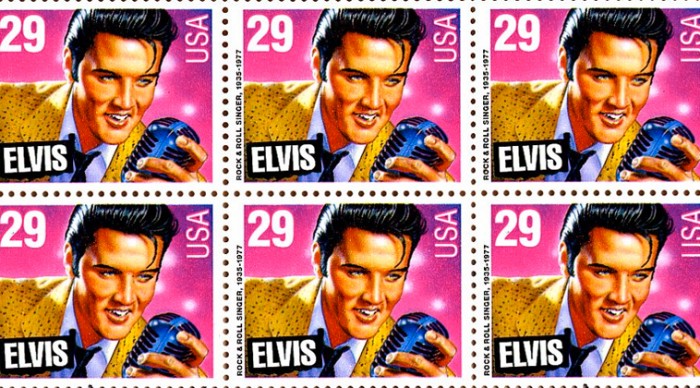Whether you’re a philatelist (that means “stamp collector”) or not, you’ll enjoy this trivia about some of the most famous and noteworthy commemorative stamps ever printed by the U.S. Postal Service.
- Perhaps the biggest story in stamp history: The Elvis stamp debate. In 1992, the U.S. Post Office announced that it planned to put the King on a first-class stamp, and for the first time the public would be allowed to vote on the design. The choices were “young Elvis” designed by Mark Stutzman, and an older, “Vegas” Elvis designed by John Berkey. More than a million people voted via ballots printed in People, and the vote was a landslide: 75 percent for Stutzman’s young Elvis. The stamp was issued on January 8, 1993 (which would’ve been Elvis’s 58th birthday) and went on to become the bestselling commemorative stamp in U.S. history.
- There’s a customary 10-year waiting period between a person’s death and when they’re allowed to appear on a commemorative stamp. The exception: dead presidents. It’s a tradition for a stamp bearing the deceased Commander-in-Chief to be released on their first birthday following their death. Ronald Reagan died in the summer of 2004, for example, and his stamp was released the following February 6, his birthday.
- That tradition didn’t quite work out for Richard Nixon. He died in April 1994, but production problems resulted in Nixon’s stamp getting to the market in April 1995, about five months late. However, about 160 Nixon stamps were misprinted—the portrait of Nixon is off-center and his name is upside-down. If you’ve got one of these, it’s worth an estimated $8,000. Also, the regular, non-mistake Nixon stamps are reportedly among the worst-selling commemorative stamps ever issued by the U.S. Postal Service.
- A set of stamps honoring The Simpsons was both a hit and a flop. Stamps depicting Homer, Marge, and the rest were sold more than 318 million times after their 2009 debut, enough to place in top 30 of all-time bestsellers. However, the U.S. Postal Service greatly overestimated demand. They printed a billion Simpsons stamps—which means 682 million stamps had to be destroyed when postage rates went up. That accounts for $1.2 million in printing costs gone to waste.









